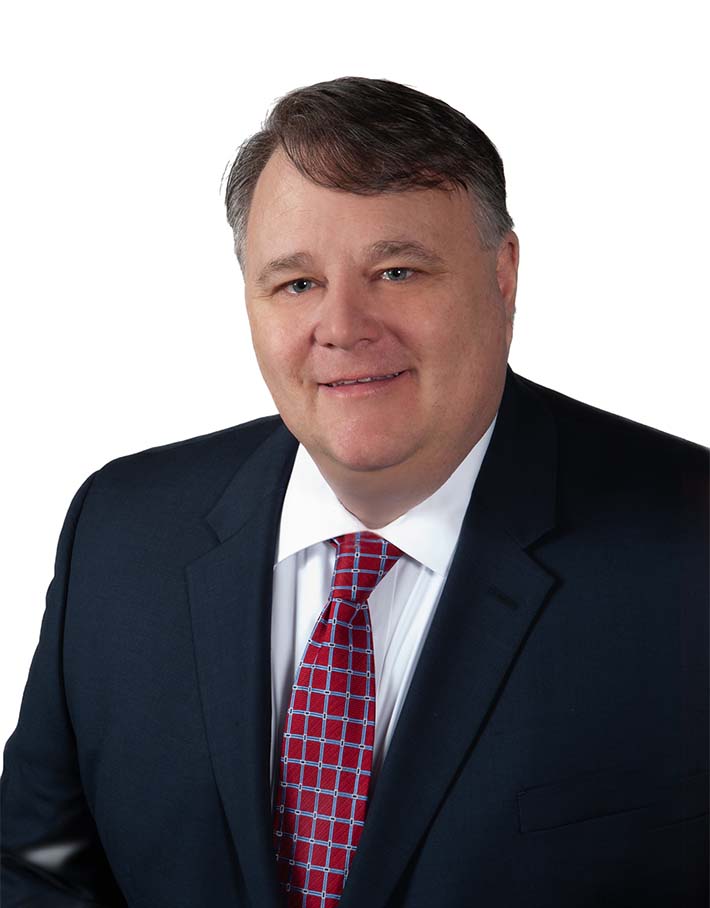Leveraging Clearing Conversion Experts for Success
By Jay Donlin, Pete McAteer and Tim Buckler
Subscribe to our original industry insights
Clearing Conversions are an enormous undertaking. Oyster Consulting’s experts Jay Donlin, Jim Roth, Tim Buckler and Pete McAteer share what drives them, what’s involved, and what makes a successful conversion.
Transcript
Transcript provided by Temi transcript services
Libby Hall: Hi and welcome to today’s podcast, featuring conversions – what drives them, what’s involved and what makes a successful conversion. I’m Libby Hall, your host for today, and with me are Oyster’s clearing conversion experts, Jay Donlin, Jim Roth, Pete McAteer and Tim Buckler. Jay, let’s start with you. A clearing conversion is a huge undertaking. Can you walk us briefly through what leads firms to consider changing their clearing firm relationship in the first place?
Jay Donlin: The industry has evolved, and if your contract is more than five years old, the industry is basically all evolved from your contract. And those drivers, whether it be economic or whether it be functionality, you know, can continue to provide you value. If you are to reassess your contract and find out if the provider you’re with still matches up with your goals and objectives as a firm, whether it be customer service, whether it be technology stack, whether it be the pricing model, products and services offered, a lot of things have changed in the last five years. So your current clearing firm could be inhibiting your growth because they’re behind the curve with respect to technology, or cost prohibitive services for integrating other technology within their stack or within your stack.
Jim Roth: I just want to think about the conversation that we just had minutes ago, you, Tim and I. It’s in reference to the clearing firms trying to make the pricing easier to manage, not multiple pages, but also creating the flexibility of taking a different pricing approach. When in fact, the evolution of basis point pricing may not necessarily be in the best interest of the end investor, if, as you alluded to Jay, their buy and hold strategy, that doesn’t make sense. So it’s those types of potential growth inhibitors that would probably cause people to re-engage their clearing relationship into trying to figure out how they can construct the next pricing proposal that would be mutually beneficial.
Tim Buckler: That’s right. One thing I want to add there is that they can model your growth and they can anticipate how you’re going to grow over the length of the contract, and build incentives that align with both your future growth and how the clearing firm responds in order to give you the best deal in the next few years, so that you’re not looking at a terrible deal in five years, or whenever you’re terminating.
Pete McAteer: What I heard Tim say resonates with several of our clients that we’ve talked with in recent months and the last year or two. Where their growth plan, the firm’s trajectory, where they’re going, why they’re going, needs to be aligned with their current clearing contract that will drive and incentivize and create basically a symbiotic relationship between the clearing firm and the wealth management firm. That’s right.
Jim Roth: I just remembered saying this before. I said, a former colleague of mine shared that there’s only three guarantees in life: death, taxes, and increased regulatory oversight. You know, if you look at Reg BI and the scrutiny that comes with new regulations, and of course the focus on transparency, most of the firms that we work with, they suffer from some sort of lack of policy awareness, adequate training, and maybe staffing for their own teams. So based on our experiences, regulators are demanding more automated processes and to make sure that they’re the vendor assessments that are repeatable. So that’s the real concerns that we’re hearing lately.
Pete McAteer: I think that the term that I’ve heard and I’ve used with several clients and that they’ll find if they go through and do a vendor rationalization, that they probably have somewhere in the neighborhood of 40 to even 80 different client relationships for the different services that they require to run their business, and where they have opportunities to package those or bundle those services and leverage other enterprises, our agreements and relationships and enterprise pricing that certainly bodes well for their economics of the total cost of the platform. While the clearing platform is one of the larger costs, I always use the Christmas tree analogy: how you decorate your Christmas tree is entirely up to you, but it gets more expensive and more expensive all the time
Libby Hall: So if they’ve gone through their contracts, they have decided they’re going to stay, or now they’re not going to stay, and you need to do a conversion. What is involved in that in general terms? And what is it that people don’t think of when they’re thinking of a clearing conversion?
Jay Donlin: Your clearing firm or your custody contract or relationship is your largest relationship in general. And you are touching every facet of your business when you are moving from one firm to the other. So it is a large project. It’s a complex project because you’re having to touch so many areas into moving to a new clearing farm with new policies, new procedures, new technology. The change management process is the key managing that process effectively to be able to lessen the pain of the move is the key to a successful conversion. There is going to be pain. It’s just a matter of what level of pain during the process. We were able to mitigate risks and address issues and for all the upticks, but you decided at the new firm, there are going to be changes that people across your firm are not going to embrace, and so it’s your job to figure out how to effectively manage those expectations.
Libby Hall: So what makes a successful clearing conversion?
Jim Roth: What we have seen is we have the resources internally here. Whereas in fact, many of the broker dealers haven’t dedicated the necessary resources to transition the business. Keep in mind, the clearing firms are looking simply to transition your assets and the accounts that aren’t necessarily involved with transitioning your business. And that’s a clear differentiator because, well, after the transition occurs, there could be items that will impact elements of your business. That’s really not the responsibility of the clearing firm.
Tim Buckler: Something else too, is that a lot of the clearing firms have a risk appetite that makes it, they want to push as much risk onto the clearing broker dealer as possible. So they are only somewhat helpful in validating data and seeing how your current operations work today and how to port that over to the new clearing firm. They want to make the current, make all the decisions that they can so that anything that happens in the future, the clearing firm can say, well, that was not our decision. That was your decision to make, and we made you available of all the choices you just made the wrong one. And so a lot of times you don’t have the forethought to think what’s the best for me today, and five years from now, and setting something up now is a lot easier when you’re going through the whole process of change. So sometimes you need the expertise to say, this is how other firms have done it in the past.
Pete McAteer: Some platform configuration decisions seem relatively innocuous or inert. You’re not sure why you’re making the decision. You don’t understand the downstream impacts whether it has to be with reporting or how the firm is configured on the platform. Our experience definitely helps in that we’ve learned those lessons along the way, and we try to try our best not to have our new clients experience the same issues. Another thing, I was just going back to what Jim Roth said a minute ago, the resources at most of our clients, they’ve been through a clearing conversion, one or two, maybe three in their careers. We’ve been managing clearing conversions for several years and we probably do help manage a dozen every year. So between the various clearing firms, the deconversion as well as the conversion onto a new platform, we understand some of those mechanisms. We understand some of those gaps. We certainly, with Tim bucklers expertise, understand the data and the data transformation that goes along with moving data from one platform to another. What are those measurements of success criteria for a conversion? And what would those things be? One is conversion weekend. If everything has gone well, and everything has been planned well, conversion weekend is actually pretty quiet.
The true proof being in the pudding, that readiness assessment that we try to do a few weeks prior to the conversion event itself is to really go around the firm to go around to the various leaders, ensuring that each leader is aware of the change, aware of the impacts and feels that everything has been done to prepare his or her team for the conversion event and for doing their business, they’ll be doing the same business, but they’re going to be using a different platform. It’s different process, different buttons to push different look and feel. It’s like learning to speak a new language. You’re still saying the same things, but you’re saying in different words. It’s the few weeks following conversion, where the support is needed to ensure, to reinforce, monitor, and reinforce the changes to ensure that the process, the configuration, the work cues that are set up the workflow, all the documentation, all those processes and procedures are honed, well-oiled. There’ll be a few that squeak and grumble along the way, but that’s where the dust settles. And they get back into that operating mode and truly are reaping the efficiencies of a new platform.
Jay Donlin: Yeah. One of the biggest fears, and this might go to a success criteria, one of the biggest fears is retention of clients and retention of advisors. And in none of the conversions that we’ve been involved in, has that ever been a realized fear. There may be a few that ended up leaving easily. There’s an underlying issue. It’s not related to the conversion. Um, the typical conversion people will go through, and it’s not a huge, it’s a bigger risk perception than it is an actual risk that you’re going to have, this mass exodus of clients and mass exodus of advisors as a result of a clearing or custodian change.
Pete McAteer: It certainly doesn’t hurt though, to add onto your point Jay, to review your potential at-risk practices or advisors, you know, the ones that are typically rumbly, just making sure you’re paying them the right amount of attention, and maybe including them in the assessment as part of the change. We’ve seen that work very well with several of our, our clients, where they have assembled a clearing assessment or clearing vendor assessment committee, if you will, to help assess and go through the demonstrations and maybe be participated in some of the on-sites where they’re evaluating and examining the clearing firms and what they have to offer. So, including some of those folks, some of those leaders from various parts of the firm will certainly help and accepting the change and that the change is being done in a very democratic way.
Tim Buckler: And part of the process that needs to go on during the whole conversion process is making sure that you are constantly keeping your field and your home office informed and making sure that they know where they are in the process, making sure you get their help on and feedback on certain changes you’re going to implement so that there’s no big surprises. You know, the week after conversion, no one should say, “Oh, I had no idea this was coming.” Your job is to make sure that along the way you keep them up to date and that there’s nothing that’s going to just make them throw her hands up in the air.
Jim Roth: If you focused on the element of the conversion in the past, firms would advertise a seamless experience with these platform changes. While we can all smile on the phrase seamless, because each of us knows from personal experiences with a variety of clearing firms, the critical impact of transitioning your business, even though the foundation of a clearing conversion may be the same, no single conversion experience is alike. There’s so many different decisions that may be unique to the firm that can have a dramatic impact on the success of a transition. So finding the right partner is critical to your success. And depending upon your business needs and preferences, Oyster can match your firm with the appropriate strategic partners. Once we determine your requirements, as Pete McAteer just said, Oyster can help you get started.
Libby Hall: Well, that’s all the time we have for today. Thanks everyone for listening. If you’d like to learn more about Oyster’s clearing conversion services, contact us at oysterllc.com and we’ll be happy to chat. If you like what you heard today, follow us on whatever podcast platform you listen to and give us a review reviews, make it easier for people to find us.





